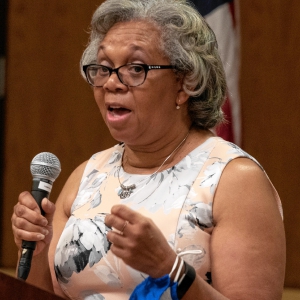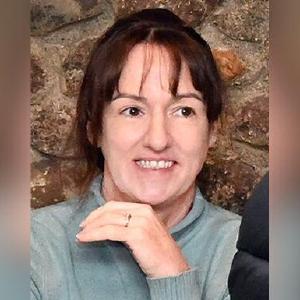Polio survivors thought they had conquered the devastating disease only to be stunned by its vengeance years later
| Published: 05-08-2017 7:21 PM |
When polio swept the nation in the early to mid 20th century, Cooley Dickinson Hospital in Northampton had a ward full of cribs for sick babies. Some children spent weeks in the hospital, behind glass, not able to touch another human being, survivors remember.
Many of them died of the virus which attacks the nervous system and weakens the muscles. In some cases, the virus had caused paralysis in their limbs or caused their respiratory muscles to collapse, suffocating them. They were confined to bed for months, since there is no treatment for polio. Some never regained mobility.
Others recovered. The virus gone, their fevers subsided, they slowly learned to walk again over months or even years.
In the early 1950s polio outbreaks caused more than 15,000 cases of paralysis each year in the United States. Following introduction of the first vaccine in 1955, the number of polio cases fell rapidly, according to the Centers for Disease Control and Prevention in Atlanta.
Since then, the virus has been mostly eradicated and these memories have faded, but in recent years a cruel legacy of polio has emerged — a condition called post-polio syndrome — in which, decades later, survivors of the disease have new muscle weakness and fatigue.
It’s a condition that many doctors haven’t heard of and even fewer know how to treat, says Marjorie Townsend, 70, of Hadley. She had polio when she was 5 and started experiencing the muscle weakness that characterizes post polio symptoms over 25 years ago.
“A very sweet, young doctor asked me if I was out of the country when I got polio,” she said. She told him: “…no, I was going to first grade in Hadley, Massachusetts.”
Townsend is a member of a small group of people with post-polio syndrome who have formed a support group to help one another deal with that information gap.
Article continues after...
Yesterday's Most Read Articles
 Holyoke man finds bear paw in his yard
Holyoke man finds bear paw in his yard
 Petition to block auto dealership on King Street falters in Northampton
Petition to block auto dealership on King Street falters in Northampton
 First look at how little Amherst’s police alternative being used called troubling
First look at how little Amherst’s police alternative being used called troubling
 Developer lands $400K loan for affordable housing project in Easthampton mill district
Developer lands $400K loan for affordable housing project in Easthampton mill district
 Developer pitches new commercial building on Route 9 in Hadley
Developer pitches new commercial building on Route 9 in Hadley
 Boyfriend accused in slaying of Hampden sheriff’s assistant, former legislator’s top aide
Boyfriend accused in slaying of Hampden sheriff’s assistant, former legislator’s top aide
They gather monthly on Sundays at Dunkin' Donuts on Route 9 in Hadley.
As Townsend talked at one recently meeting, others around her sipped coffee out of white paper cups.
One woman arrived in a wheelchair, another walked with a limp to the counter to buy a drink. The cashier knows many of them by name.
They’ve been coming to this location for a few years now, where they sit under the florescent lights, eat chocolate doughnut holes and talk about the illness they thought they had conquered.
“In all the time that you have gotten better as an adult, nobody realized that there was going to be something else to come along much later,” said Townsend, whose legs were paralyzed when she first contracted the virus. It took seven years of her childhood to relearn to walk with crutches. In her 40s, though, trouble arose again. “I knew I was getting weaker, but I couldn’t figure out why. Little by little you realize, OK, I used to be able to skate last year and now I can’t, what’s going on here? It was mystifying.”
The group members swap medical referrals and tips about how to get up and down stairs without falling, they share stories about the days when they were first sick, talk about the people they knew who died from the virus, and express their frustrations with a lack of resources for post-polio syndrome, which can make everyday tasks like doing the laundry or going to the grocery store exhausting.
“I’ve spent my entire life trying to feel normal and it’s been hard because nothing has been straightforward,” says Patricia Branch, 75, of Amherst.
After becoming completely paralyzed at age 5, Branch, too, took years to learn to walk again. She developed new muscle weakness in her 30s, and now must use a wheelchair.
“I was pretty adament that I was going to live a normal life, but it was hard. I was tired all the time.”
Post-polio syndrome is a condition that is not well-understood and at times, not taken seriously, the survivors say. The exact incidence and prevalence of it is unknown, although some studies have estimated that it may develop in 25 to 40 percent of the 20 million still-living polio survivors, according to the World Health Organization, an agency of the United Nations that is based in Switzerland.
The only clinic in Massachusetts that specializes in post-polio syndrome, International Rehabilitation Center for Polio in Framingham, sees just three to four patients every week. These people travel from all over the world to seek specialized care, says Maria Cole, occupational therapist and clinical supervisor at the center.
The most common symptom is new muscle weakness, says Dr. Julie Silver, an associate professor at Harvard Medical School and a physician at Spaulding Rehabilitation Hospital in Boston.
“Common complaints are they can’t stand as long as they once could, they can’t walk as far as they once could… they have overwhelming fatigue that prevents them from accomplishing everything they used to be able to do,” says Beth Grill, a physical therapist at the Framingham center. It’s not uncommon for patients to report new incidents of falling or loss of balance. In some cases, post-polio syndrome causes muscle and joint pain, says Grill.
Diagnosis is a process of ruling out other serious conditions, like Parkinson's disease.
At the most recent support group meeting in Hadley, the survivors exchanged stories for over an hour.
Townsend gets a faraway look in her eyes when she talks about going to the hospital as a child, almost as if she is returning to that time.
“I remember the little boy in the hospital next to me died. Anybody else remember that when they were in the hospital?” she asked looking around the circle of people.
“I remember his name was Joey because he was right next to me. We were very close because there was no room for everybody. ... We were stacked up like cordwood in Cooley Dickinson hospital — there were so many kids in the last couple of years before the vaccine came out.”
Townsend contracted polio in 1953. She had a high fever and was at home in bed when a doctor came to visit. He told her to get up and walk. She couldn’t.
Her parents rushed her to the hospital, where a spinal tap revealed she had the virus, which attacks the motor neurons in the spine. For the next six months, her legs wouldn’t move. She finally regained full control of her legs at age 12.
“I don’t think anyone at that point knew that there was post-polio,” she said.
She felt healthy over the next few decades, raised three children and had a long career as an occupational therapist. But when she reached her 40s, she slowly started to notice muscle weakness again.
“I probably ignored a lot of symptoms when I first started experiencing them,” she said.
Another member of the support group, Philippe Galaski, 65, of Florence, mostly recovered after he contracted polio as a baby in 1953.
The polio caused weakness in his legs, but with surgery and physical therapy, he regained mobility by the time he was in his adult years.
He worked for years at a physical therapist, without much thought of his experience with polio, until he, too, started experiencing new weakness in his legs at age 35. Eventually, he had to walk with a cane. But, slowly, walking with a cane became more difficult. Now he uses crutches.
"I'm facing it, but it's been a challenge," he said.
As it was for Townsend and Galaski, the onset of the condition is subtle, occurring over years, says Silver of Spaulding Rehabilitation Center.
“It's not entirely clear why they begin to experience new weakness, but it's probably related in part to overusing their muscles to accommodate for weakness from the original illness,” she said.
Eventually, Townsend sought help at the University of California in San Francisco. Doctors measured the electrical impulses in her muscles and found that they were moving much too slowly.
“Those nerves had been injured and they weren’t working,” she said.
There is no cure for post-polio syndrome, but there are things people can do to manage their symptoms, says Grill of the International Rehabilitation Center for Polio. “Treatment is based on what symptoms they are experiencing. It's important to avoid falls as they can cause bone fractures and further disability,” said Silver.
In some cases, people are directed to wear braces to support their weakened muscles. They can rearrange their homes to make to avoid stairs.
Since her diagnosis, Townsend has found ways of coping, like throwing her laundry down to the basement, instead of carrying it. She also has discovered that going down the stairs backward helps her to get a better grip on the railing. But joint pain keeps her awake at night, so she is waiting to see a doctor at the Framingham center.
“Nobody local seems to be familiar or experienced with post-polio,” she says. “Most people don’t know that there are people still around who have it.”
Lisa Spear can be reached at lspear@gazettenet.com.
The post-polio syndrome support group meets on the third Sunday of the month from 2 to 4 p.m. at the Dunkin' Donuts on Route 9 in Hadley.
For more information about the group, call 727-8639.

 Valley Bounty: Grass-fed animals that feed the grass: Gwydyr Farm in Southampton focuses on ‘restoring the connection between land, food and people’
Valley Bounty: Grass-fed animals that feed the grass: Gwydyr Farm in Southampton focuses on ‘restoring the connection between land, food and people’ Weekly Food Photo Contest: This week’s winner: Mary Chicoine of Easthampton
Weekly Food Photo Contest: This week’s winner: Mary Chicoine of Easthampton  Speaking of Nature: A romantic evening for two birders — To hear the wonderful sounds of the Saw-whet Owl one must go outside at night
Speaking of Nature: A romantic evening for two birders — To hear the wonderful sounds of the Saw-whet Owl one must go outside at night Speaking of Nature: Where have all the birds gone?: They’re there, and here’s a handy tool to keep track of their appearances
Speaking of Nature: Where have all the birds gone?: They’re there, and here’s a handy tool to keep track of their appearances
